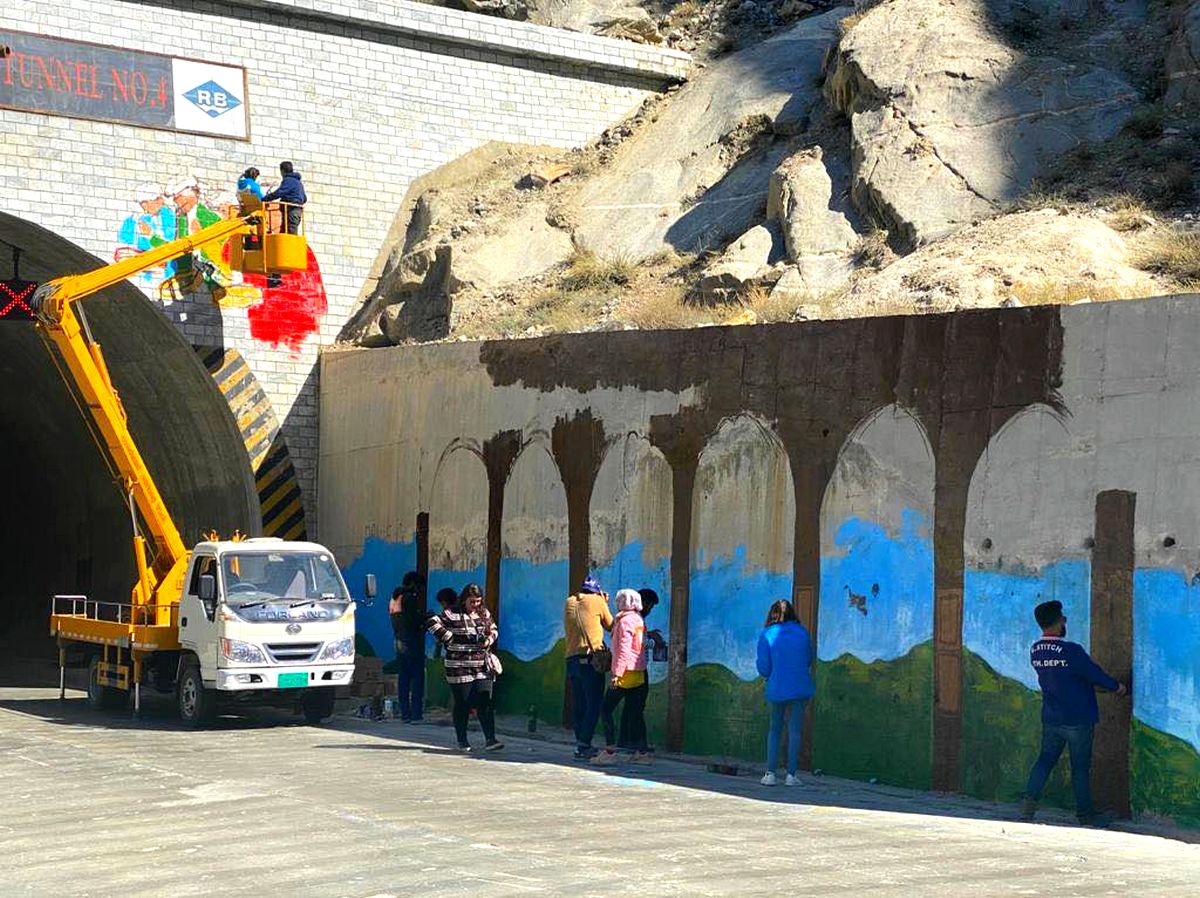Environment
Analyzing the recent “Sponsored Graffiti” in Hunza along the Karakoram Highway

The sensitivity and emotional attachment of people of Gilgit-Baltistan with the subject of wall chalking and interventions in the natural/cultural landscape have always been a hot topic. The people are very well aware as compare to any other city in Pakistan about art, its context, quality of art, and techniques to adopt. Highly professional artists in the field belonging to Hunza have long set a quality standard for the people to identify, differentiate and critic on an artwork which one doesn’t see very often in practice in any other city.
The inclination and awareness of people specifically youth towards arts, music and other forms of creative industries is increasing with every passing day. The professionals in the field of visual arts, music, and other forms of creative industry have proved themselves on national and international levels.
The underground art of graffiti has its origins in the late 1960s in Philadelphia USA writers such as Cornbread and Cool Earl went about writing their names to gain the attention of the community and media. Graffiti a practice of defacing a surface if done without consent is vandalism, with consent its a “work of art” used as a political tool.
The vandalism of natural mountains and rocks on side of Karakoram Highway – KKH through graffiti has long associated with the ugly painted names and slogans of “Senator Talha Mehmood”, the repeating visuals add more pain to this hectic journey on Karakoram Highway (KKH) while traveling from Islamabad to Gilgit. People highly discouraged the act and collectively discouraged any form of graffiti on rocks, natural landscape with or without consent.
The recent efforts of “Graffiti” by Sweet tooth and Gobbis Paints have been collectively discouraged as a hindrance in the natural beauty of its unique landscape. This model of graffiti may work very well in any other city and context, but it has faced heavy criticism and protest from everyone. The locals are very sensitive and emotional, and demanded immediate discontinuity of this activity. For any public art /urban intervention local context and communities have to be involved, the art has to be evolved from the society, communities , art cannot be imposed but it has to “be Evolved”.
Highly professional and local artists be involved to have a better understanding of context to define the form and its need. This activity could have been planned in a more creative way instead of just picking only one form of art (wall painting/graffiti), as any intervention in a natural/historic environment has to be reversible and temporary. The immediate response and raising a voice for this work is highly appreciated which clearly indicates the awareness and exposure of the people in Hunza for art and its quality.
The activity has been discontinued by the district government but the same critic and discouragement should be evident for the growing unplanned concrete buildings, growing temporary steel sheds and hotels, disappearance of community spaces, growing vehicular movements disturbing and polluting the environment, natural landscape and cultural fabric. I leave the discussion with few questions for everyone to think about :
1. Are we sensible enough before constructing new ugly concrete hotels and homes? “Abundant local materials”.
2. Do we consider how to involve any professional before construction/intervention in a natural/historic landscape?
3. Does the district government or the stakeholders (NGOs, Civil Society, Community, Political parties) were able to chalk out a policy for the future developmental challenges with growing investments in the tourism industry in Gilgit-Baltistan specific to Hunza?
4. Does any political party has this in their election manifesto to form an authority for policy making, by-laws and implementation of the guidelines for new constructions/interventions in Hunza?
These are the real issues and challenges everyone of us have to think and share.